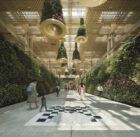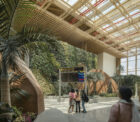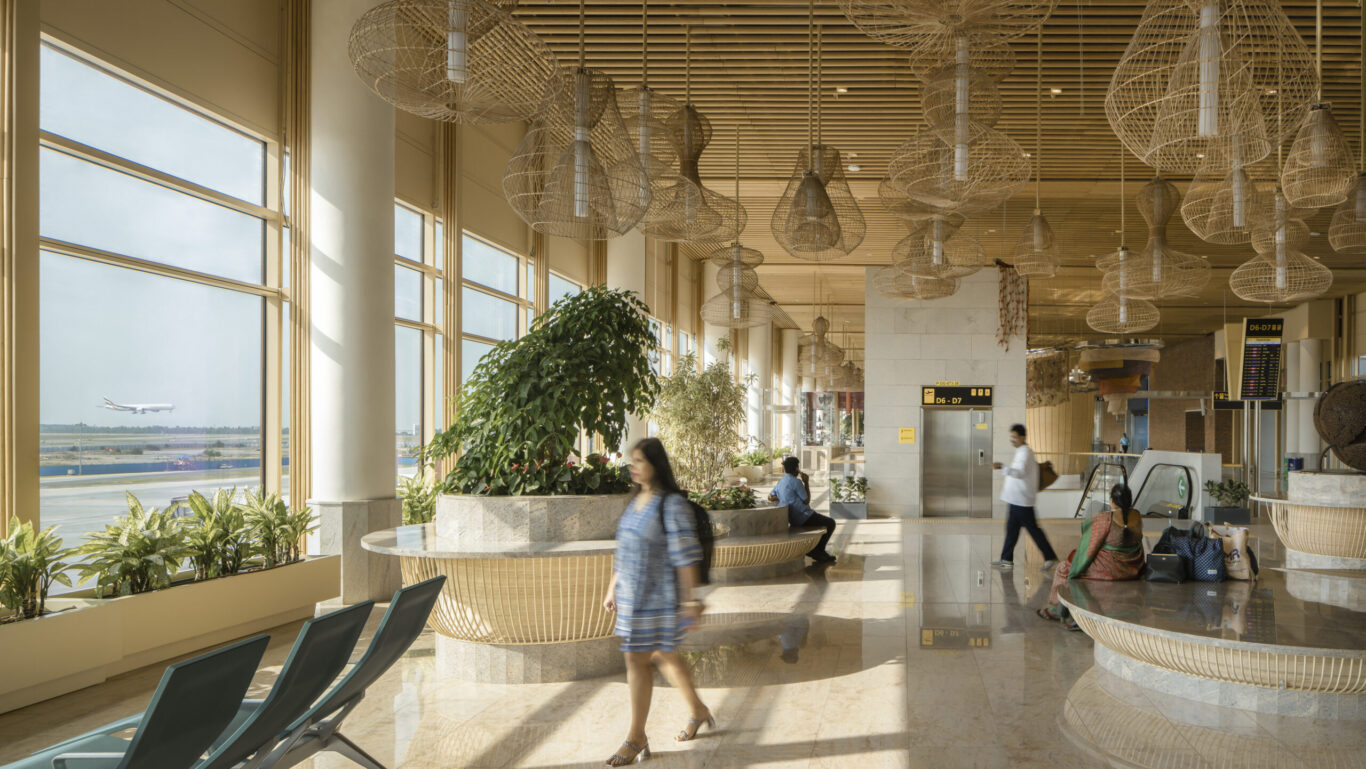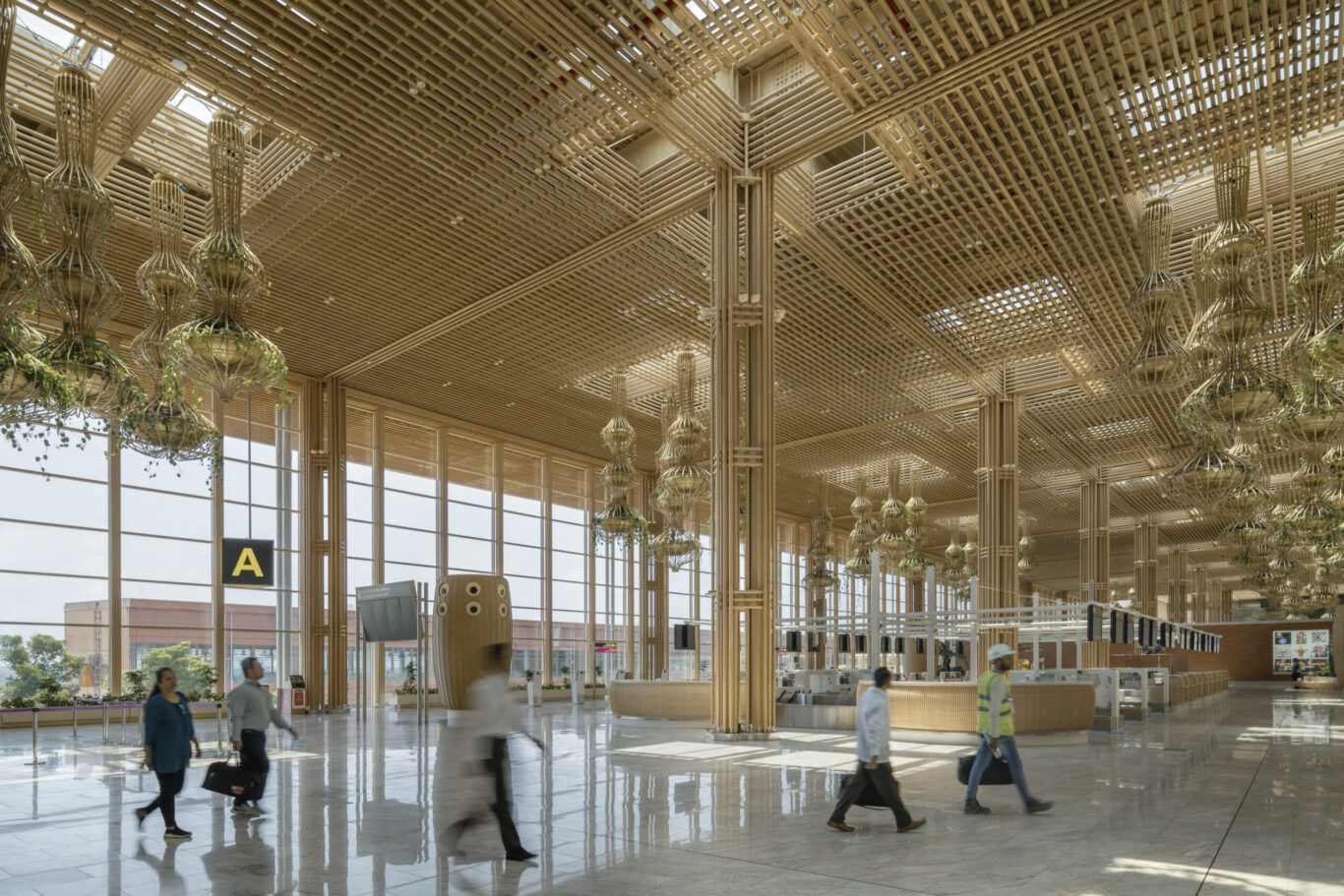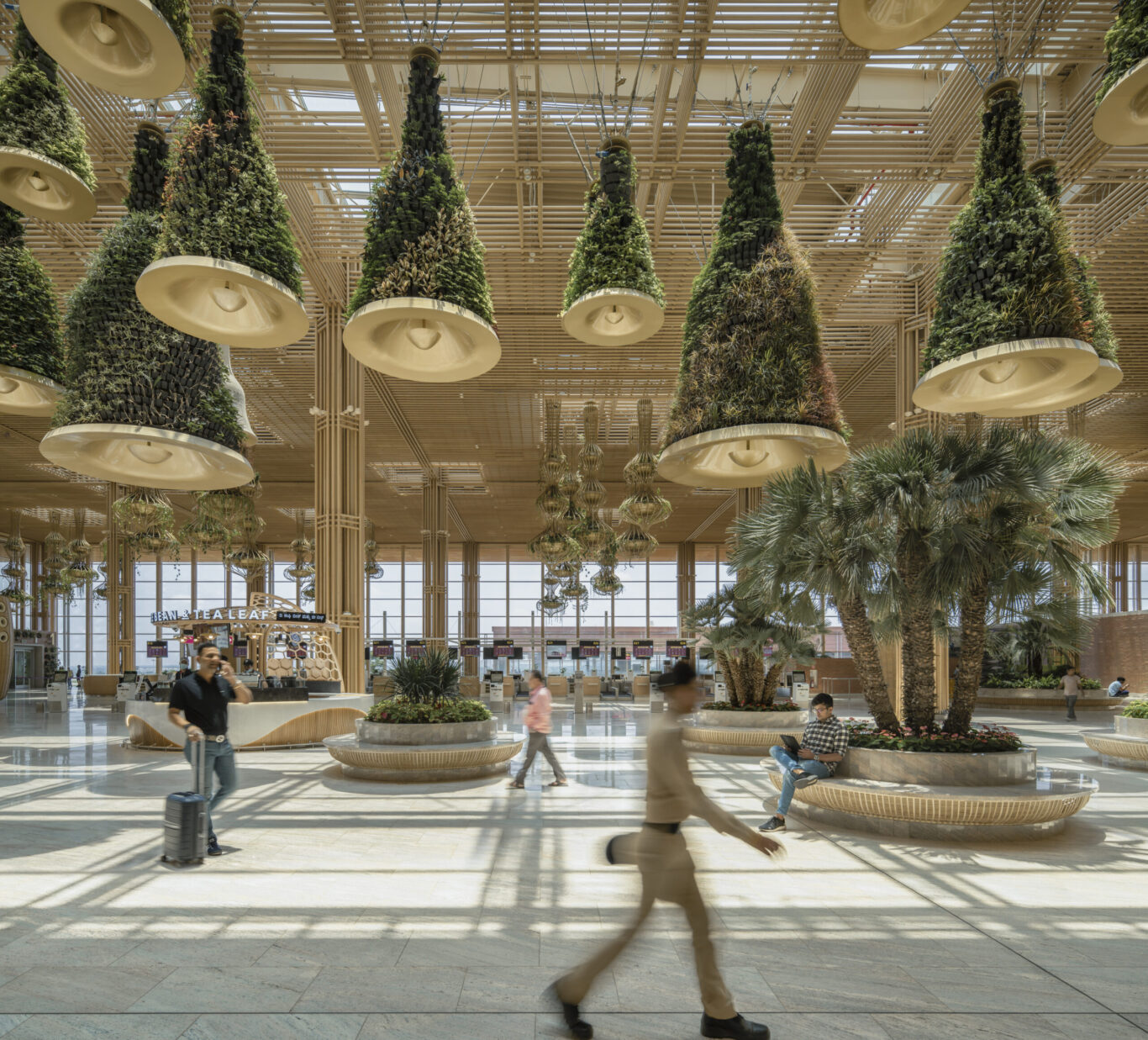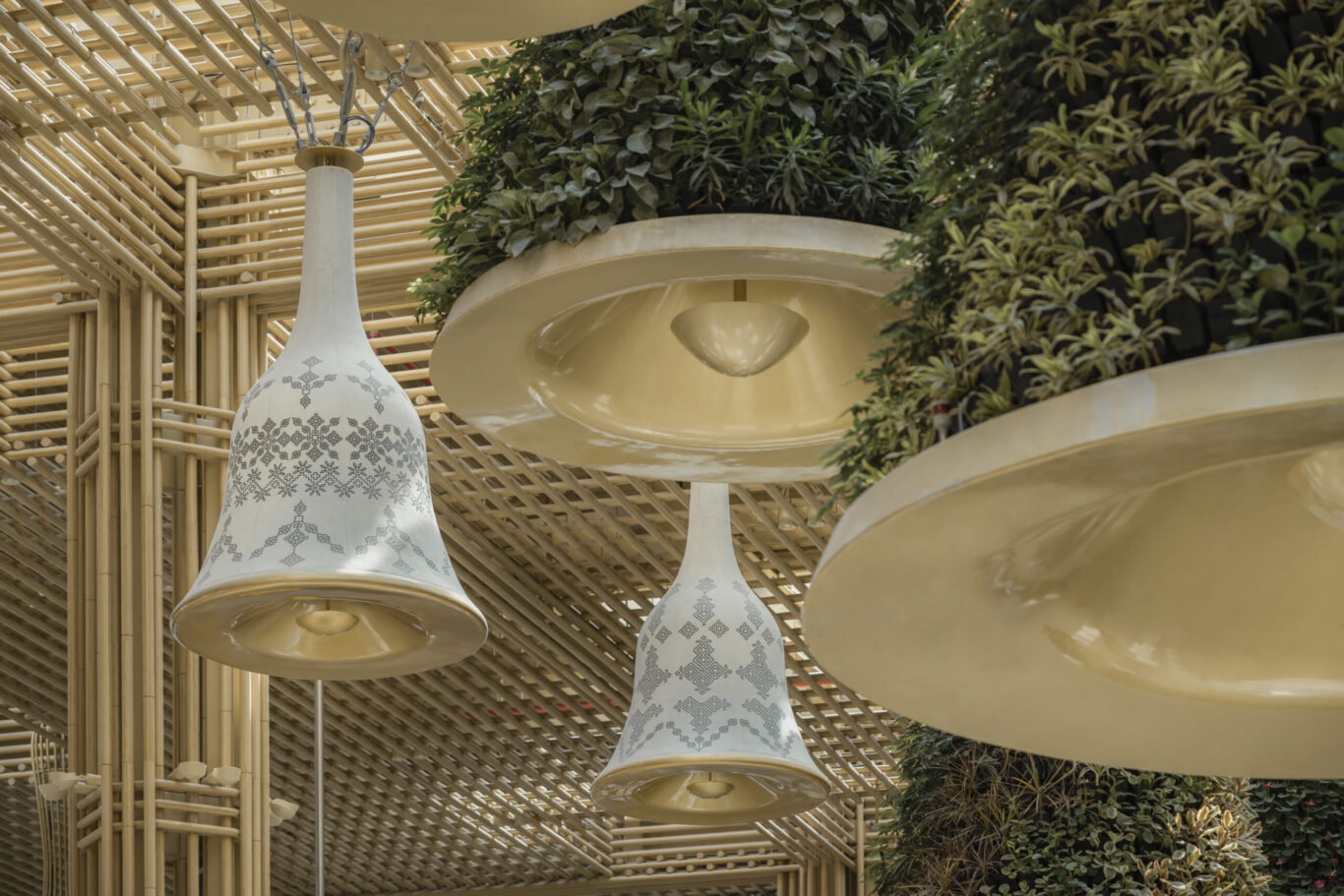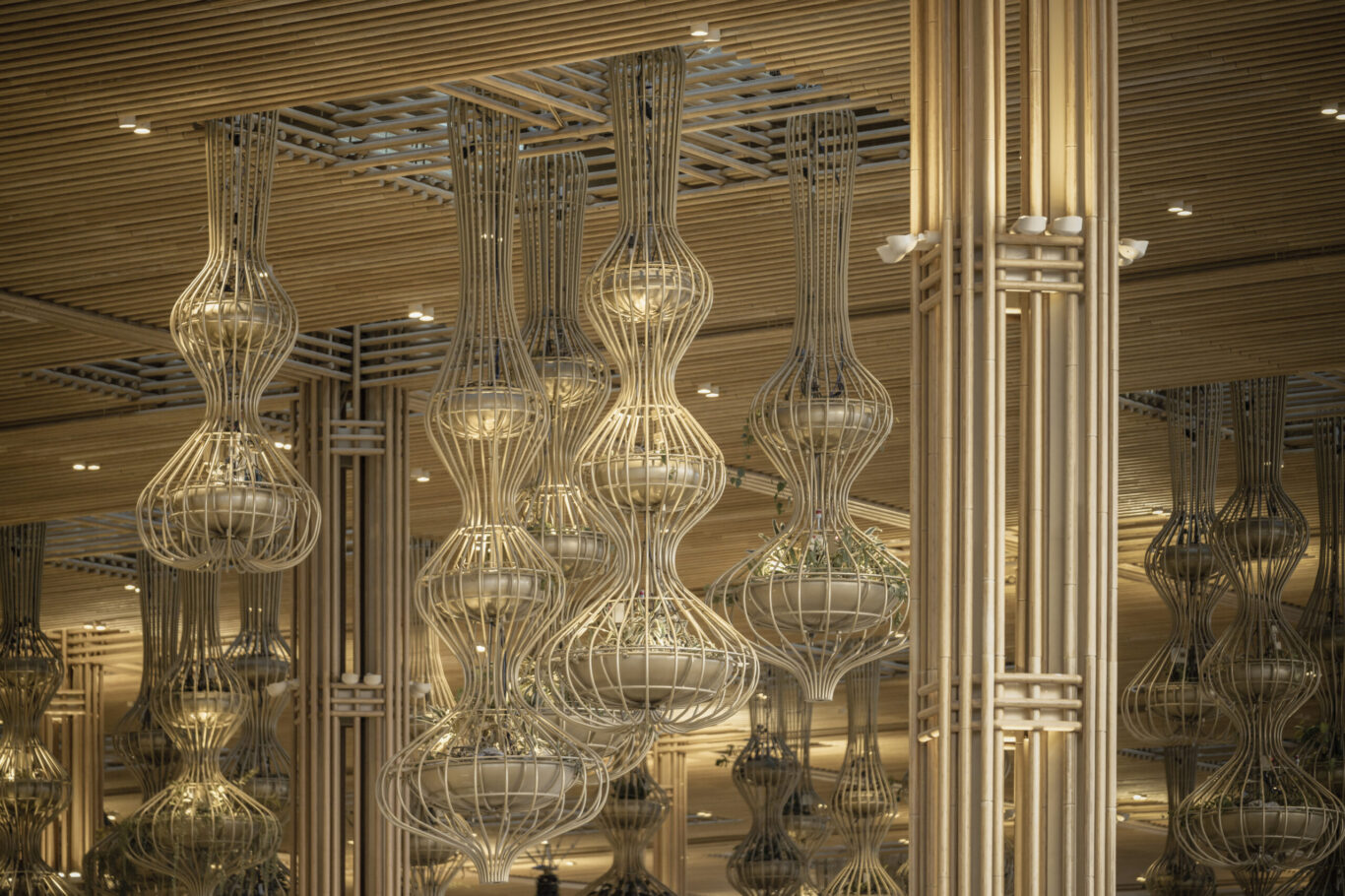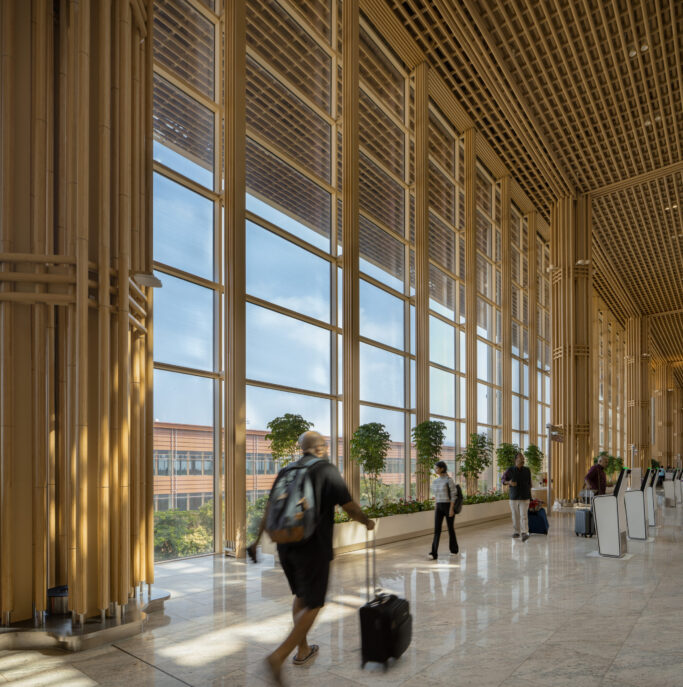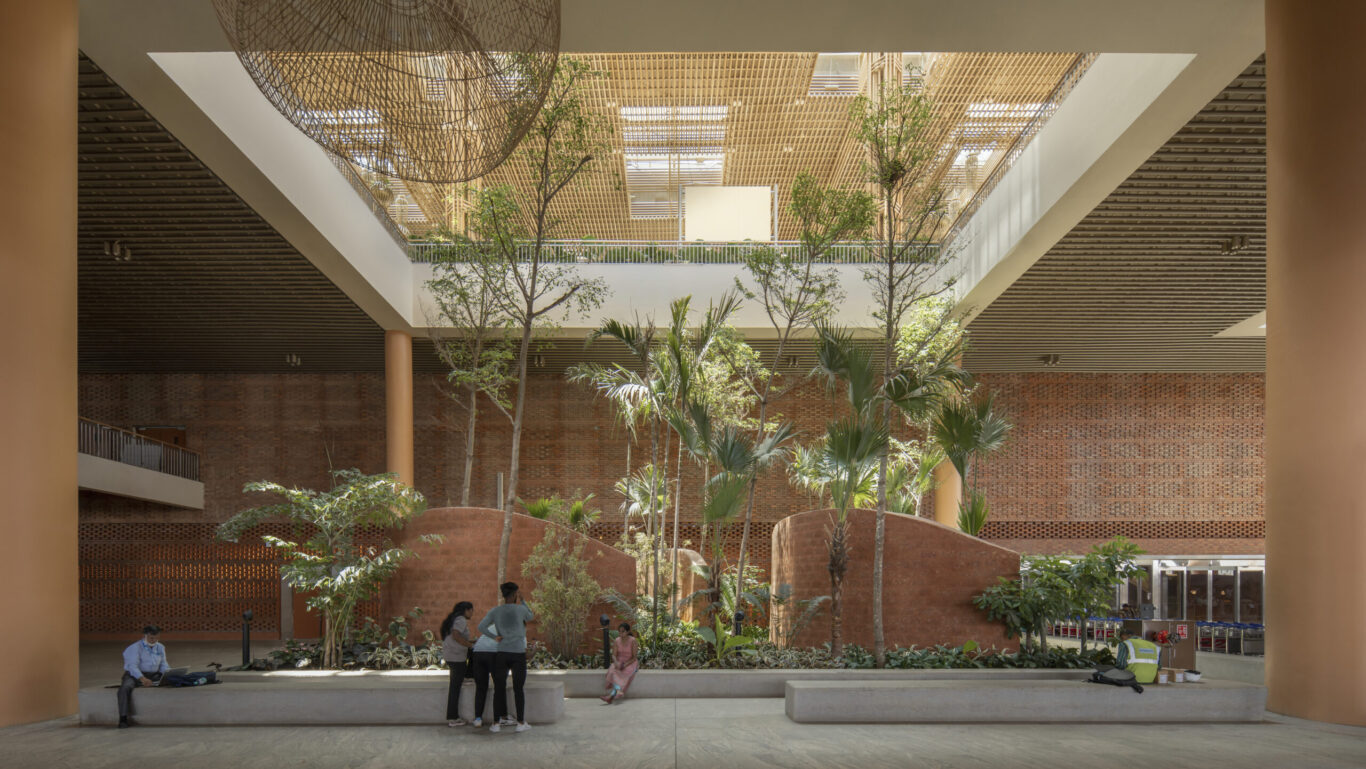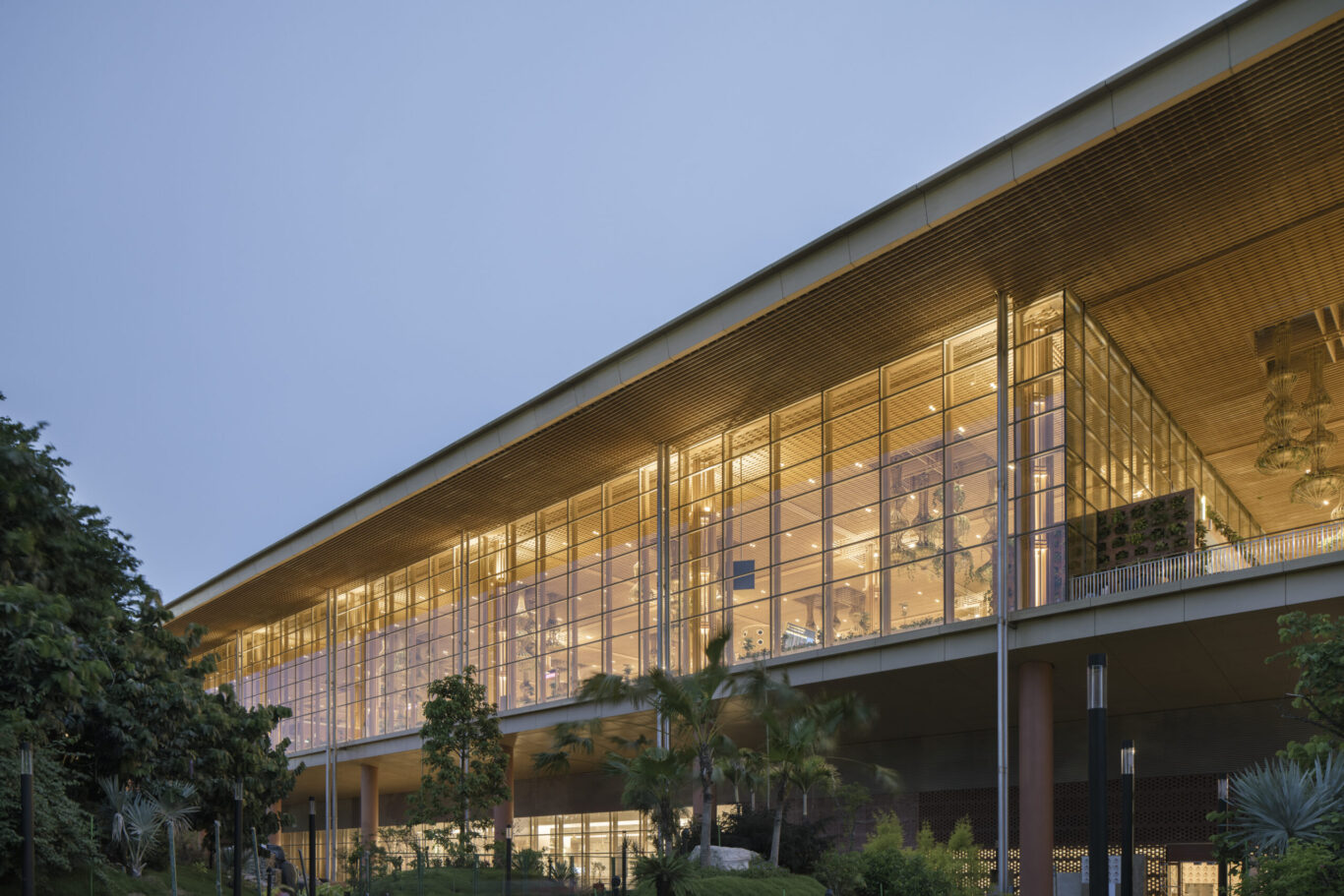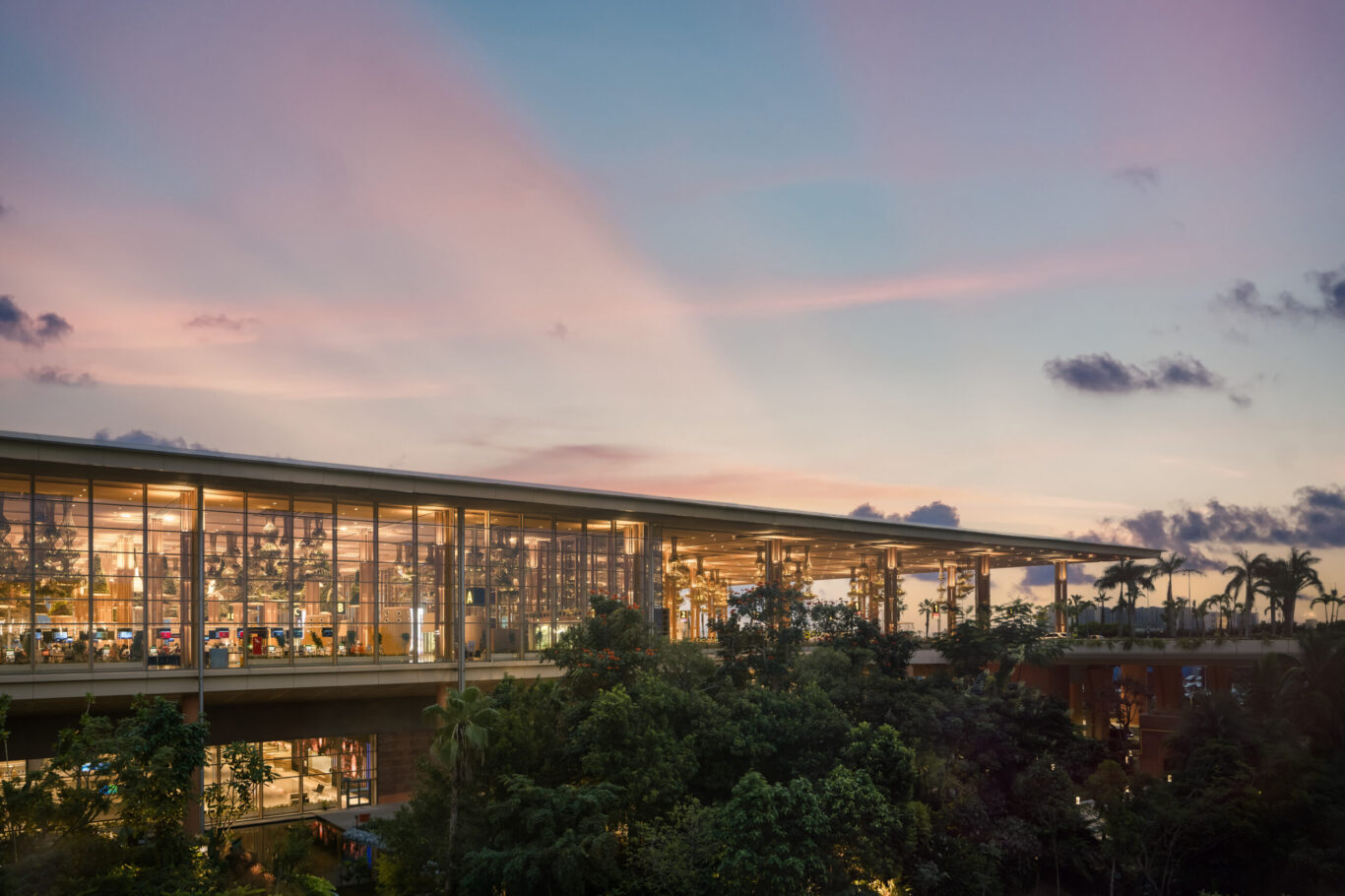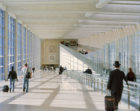Transforming a major travel hub
Envisioned as a “terminal in a garden,” this new addition to Kempegowda International Airport, Bengaluru (BLR) radically reimagines the airport experience. The construction of the 255,000-square-meter terminal marks a transformative moment for one of India’s largest and fastest-growing cities, Bengaluru, by creating a meaningful civic gateway that emphasizes Bengaluru’s rich culture and natural landscape. The design establishes a new vision for sustainable growth and conveys a sense of place that is unique to Bengaluru.

The new terminal offers a sequence of distinctive spaces, each integrated with a variety of landscape features, creating a calm oasis within the bustle of an international airport. By doubling the airport’s annual capacity from 25 million to 50 million passengers, Terminal 2 positions BLR as one of the premier airports in India and the world.

